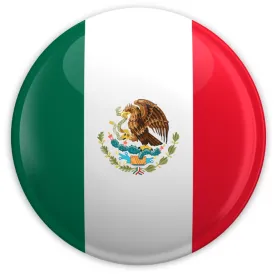In this ever-changing environment, the Mexican government issued an additional executive order (the “Executive Order”) on Friday, May 29, 2020, setting forth the country’s strategy and specific technical guidelines to resume economic activities in a safe, responsible and staggered manner.
According to the Executive Order, those companies recently qualified as essential (i.e., automotive, construction and mining) that obtained authorization of their health and safety measures from the Mexican Government will be able to resume their operations by June 1, 2020, with no further formalities.
Most importantly, companies that have not obtained the aforementioned authorization will need to file an online self-assessment at the platform made available by the government for such purpose. The filing of the self-assessment is mandatory for those companies that perform essential activities and optional for those performing non-essential activities. This online self-assessment is not subject to authorization. Therefore, companies performing essential activities will be able to resume operations as early as upon performing the online self-assessment filing. In addition, companies that obtained authorization of their health and safety measures from the Mexican Government will not need to refile.
Companies need to consider the four pillars of the strategy provided by the Mexican government when restarting activities:
- Type of activities performed by the company (i.e., essential or not);
- Size of the workplace (i.e., micro, small, medium and large), based on the number of employees attending such workplace;
- Status of the sanitary alert as communicated by the Mexican government through the stoplight system where the workplace is located:
- Green light - activities can be resumed without restrictions
- Yellow light - activities can be resumed subject to certain light restrictions
- Orange light - non-essential activities can be resumed subject to substantial restrictions
- Red light - only essential activities may take place subject to the restrictions in place; and
- Nature of the activities undertaken in the workplace (i.e., manufacturing space, office space, open space, reception area, etc.), taking into consideration social distancing, vulnerable population, caretakers, and other health and safety guidelines communicated by the government.
The specific technical guidelines provided under the Executive Order are substantially similar to those previously communicated here. However, the government has clarified that only 15 health and safety measures are mandatory for all companies, regardless of their size, while the remaining guidelines should be used as reference and implemented to the extent applicable. It may be worth noting that the platform also contains reference guides for specific industries such as aerospace, automotive, construction, hospitality, cinema theaters, etc.
The mandatory safe and safety measures are:
- Create a committee or appointment of a responsible person to supervise and follow up on COVID-19 related measures.
- Categorize activities in the workplace to identify the health and safety measures that the company needs to implement.
- Ensure that general control strategies are properly implemented.
- Maintain awareness of the stoplight system indicated by the Federal government, as explained above, and of any additional healthy and safety measures that need to be implemented.
- Identify vulnerable population (i.e., individuals older than 60 years of age, with chronical diseases, etc.).
- Ensure the correct implementation of health and safety measures in the workplace.
- If the production process or service performed permits, establish physical barriers between workstations; otherwise, provide signage that ensures that individuals are at least 1.5 meters (5 ft.) apart from each other.
- Take body temperature upon entrance and exit of employees to the workplace.
- Implement control guidelines for access and exit of visitors, vendors and suppliers to workplace, ensuring compliance with health and safety standards such as social distancing, mandatory use of facemasks, etc.
- Maintain cleaning and sanitization protocols and material for daily cleaning of surfaces, contact and common use objects, such as soap, water, and a sodium hypochlorite solution at 0.5% for disinfection.
- Provide facemasks to all employees, as well as eye and/or face protection depending on their corresponding workstations and activities, ensuring a distance of at least 1.5 meters (5 ft.) between each other.
- Ensure that all employees have access to soap, water, and disposable towels, well as hand sanitizer or rubbing alcohol at 60% to handle and clean personal equipment.
- Provide training to employees or managers on the actions that need to be undertaken to prevent the spread of the COVID-19 virus. The Mexican Social Security Institute has made training available here.
- Maintain appropriate mechanisms to identify symptomatic employees, their contacts, and communities.
- Maintain guidelines on how to act in case an employee is COVID-19 symptomatic to protect the employee, co-workers, family, etc. The guide should include how to handle suspected employees, contacts, confinement of the employee and reincorporation to the workplace.
The authority will continue exercising its inspection rights. Therefore, we suggest keeping in mind our risk management recommendations, which you may find here, emphasizing the notarized affidavit evidencing compliance of such measures. For more information, please contact your Foley relationship partner.






 />i
/>i

